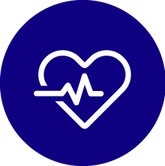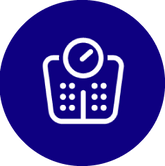The crucial roles of NMN
Several preclinical studies have demonstrated that NMN has beneficial pharmacological activity on multiple critical elements of health, including energy metabolism, physical activity, glucose tolerance, insulin sensitivity, cardiovascular, cognitive functions, and inflammation. One of the key pharmacological approaches to enhancing NAD+ biosynthesis is via dietary supplementation with a direct NAD+ precursor: Nicotinamide Mononucleotide (NMN).Collectively, NMN is a critical endogenous compound for NAD+ biosynthesis and can be used as an efficient therapeutic and in preventive intervention against many age-associated disease conditions. Pre-clinical and clinical trials have previously shown that NMN is absorbed from the gut into blood circulation within 2–3min and transported into tissues within 10–30min. NMN is then immediately utilized for NAD+ biosynthesis, significantly increasing NAD+ content in tissues over 60min. This fast pharmacokinetics has recently been confirmed by using doubly labelled isotopic NMN (C13-D-NMN), showing its rapid absorption and conversion to NAD+ in peripheral tissues.
A differentiator and advantage of NMN-C compared to other molecules marketed as NAD+ boosters are the biochemical processes involved and the bioavailability optimization technology supporting cellular energy and cellular repair.
While other NAD+ precursors require conversion to NMN before finally converting to NAD+, NMN is the direct precursor to NAD+ in what is called the ‘salvage pathway’. The body recycles nicotinamide using the salvage pathway. This is the predominant source of NAD+. The consumption of NAD+ from enzymes that use it generates nicotinamide as a byproduct. Nicotinamide is converted into nicotinamide mononucleotide and, subsequently, into NAD+ and, in turn, supporting vital molecular pathways.
NMN-C® AND MITOCHONDRIAL HEALTH
HOW LONGITY NMN-C BOOSTS NAD+ AND DELIVERS RESULTS
Nicotinamide mononucleotide (NMN) enhances mtDNA replication. β-NMN metabolism plays a role in supporting mtDNA replication by maintaining the nucleotide pool balance in the mitochondria.









